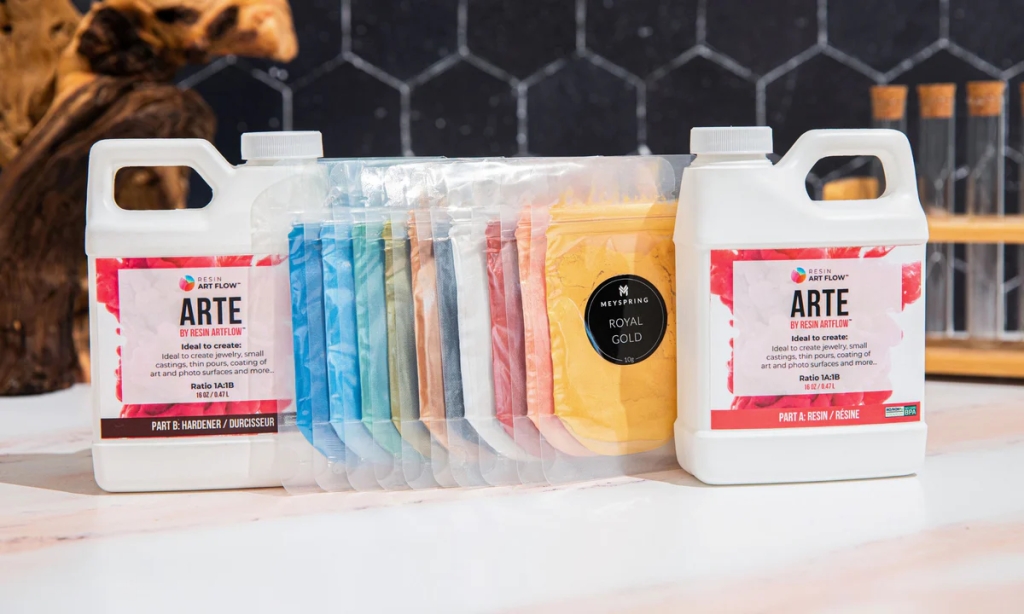Resin is a one-of-a-kind and versatile medium that has a wide range of applications, from DIY jewelry to geode wall art or sculptures. It’s renowned for its stunning, polished, crystal-like finish and durable structure, making it an excellent choice for various art and crafts projects. If you’re interested in exploring this medium but don’t know where to start, this beginner’s guide to resin art has all the information you need.
Epoxy Resin and Its Uses

Before you begin experimenting with epoxy resin as an artistic medium, it’s essential to understand a few key things. In summary, it is a transparent liquid plastic that can be tinted with mica powders, metallic pigments, or glitters to incorporate sparkle, unique effects, and metallic accents into your art and crafts projects.
Furthermore, it solidifies with a glass-like texture, making it suitable for various applications, such as resin geodes, decorative coasters, resin clocks, ocean art pieces, and many more.

Epoxy resin is usually sold in kits containing two parts: the base resin, also known as Part A, and the hardener or catalyst, known as Part B. When mixed together, these components create a chemical reaction that causes the resin to solidify. It’s essential to carefully follow the manufacturer’s instructions when mixing the two parts, as different brands may have different requirements for their products. The typical ratio of resin to hardener for artistic projects is usually 1:1.
It’s important to note that there are two main types of epoxy resin formulas: coating resins, which are best suited for thin layers, and casting resins, which are designed for deep pours. Understanding the differences between these formulas and their primary applications is crucial in choosing the most suitable epoxy resin for your project. To learn more about selecting the right epoxy resin for your needs, Check out this article.
To ensure safety when working with epoxy resin, it’s crucial to wear the proper protective gear, including gloves, eye protection, and a respirator. Additionally, using surface protection such as baking paper, plastic tablecloths, or silicone mats can prevent resin drips from sticking to your working surface. Keeping your work area clean and free of dust or dirt particles is essential to avoid ruining your resin layers. It’s also important to work on a level surface to ensure your resin layers are even.
Now that we’ve covered the basics of working with epoxy resin, let’s explore popular styles and the necessary tools and supplies. Geode Art is a style inspired by natural geological formations and can be easily recreated using the fluid essence of resin and its glassy finish. Ocean Art, on the other hand, mimics the look of the ocean using layers of colored resin to create depth and movement. With these techniques, you can turn almost anything into a unique work of art, from serving trays to phone grips

Leave a comment